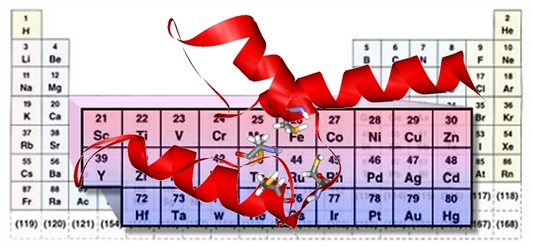Transition metals are used as a powerful tool of attack and defense for both hosts and pathogens, due to their versatile reactivity. Upon invading the host cell, bacterial pathogens encounter a myriad of attacks from host immune systems, including limited access or overload of metals and redox stresses. To survive and thrive in the host, bacterial pathogens have evolved complex systems for acquiring, regulating and utilizing metals for physiological functions. Such systems are promising targets for new antimicrobial therapies because of their imperative roles in the survival and virulence of the pathogens. In the wake of newly acquired multiple-drug resistance in bacterial pathogens and lack of new antibiotics in the pharmaceutical pipeline, exploration of non-conventional routes for developing next-generation antimicrobial drugs is urgent. To fully leverage the mechanisms of transition metal usage in host-pathogen interactions into active drug design, a fuller understanding of the molecular details of these interactions and the action mechanisms of potential drugs targeting either essential metalloproteins or metal homeostasis is required. For this reason, the research in my group is devoted to fill the knowledge gap in this regard with focus on the following two areas:
1. Structure-function relationships of Fe-S sensors in bacterial pathogens. Fe-S proteins are a group of metalloproteins containing Fe-S clusters composed of two or more iron ions and inorganic sulfurs. The rich redox properties of Fe and S make Fe-S proteins ideal redox sensors for bacterial pathogens in response to a wide variety of stresses encountered in the host. These Fe-S sensors are crucial for the pathogenesis of bacterial pathogens. Lack of atomic-level structural information for most Fe-S proteins has limited a full understanding of their substrate selectivity and redox-dependent molecular mechanisms. We aim to fill this knowledge gap by using biophysical and spectroscopic studies of Fe-S redox sensors to define action mechanisms, which will pave the way for designing drugs and strategies to interrupt functional Fe-S sensors.
2. Antimicrobial activities and molecular mechanisms of metallocomplexes. Metals have been used as antimicrobial agents since antiquity. Different metals have distinct actions to microbial cells, including oxidative stress, protein dysfunction, disruption of essential metal homeostasis and membrane damage. We seek to elucidate the transport pathways and cellular targets of metal-based drugs in bacterial pathogens. This information will be instrumental in understanding the antimicrobial mechanisms of these metallocomplexes, which will open the door to design more effective metal-based drugs.
Funding support: NSF CAREER, NIH MIRA
1. Structure-function relationships of Fe-S sensors in bacterial pathogens. Fe-S proteins are a group of metalloproteins containing Fe-S clusters composed of two or more iron ions and inorganic sulfurs. The rich redox properties of Fe and S make Fe-S proteins ideal redox sensors for bacterial pathogens in response to a wide variety of stresses encountered in the host. These Fe-S sensors are crucial for the pathogenesis of bacterial pathogens. Lack of atomic-level structural information for most Fe-S proteins has limited a full understanding of their substrate selectivity and redox-dependent molecular mechanisms. We aim to fill this knowledge gap by using biophysical and spectroscopic studies of Fe-S redox sensors to define action mechanisms, which will pave the way for designing drugs and strategies to interrupt functional Fe-S sensors.
2. Antimicrobial activities and molecular mechanisms of metallocomplexes. Metals have been used as antimicrobial agents since antiquity. Different metals have distinct actions to microbial cells, including oxidative stress, protein dysfunction, disruption of essential metal homeostasis and membrane damage. We seek to elucidate the transport pathways and cellular targets of metal-based drugs in bacterial pathogens. This information will be instrumental in understanding the antimicrobial mechanisms of these metallocomplexes, which will open the door to design more effective metal-based drugs.
Funding support: NSF CAREER, NIH MIRA
